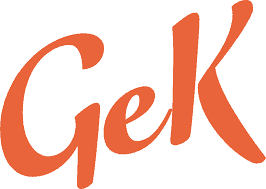Digital avatars
Digital avatars are digital versions of people. They exist only in the virtual world. They are, especially on the outside, a credible reflection of human appearance. In the future, their quality will only increase. Not only in appearance and the way they move, but also in speech and conversation.
Everywhere we request information, digital avatars may be in the future. They’ll tell us bus, train and plane departure times. And they will read the latest news to us 24 hours a day, both online and on television. Even breaking news can be brought to us by these speech robots. At any time of day, 24/7, they read us the weather forecast, take our orders at fast food restaurant and in some places even do a brief intake. It doesn’t have to matter where you are as a consumer: from the comfort of your home, on your smartphone or at the location itself.
Frequently asked questions
Digital avatars can be trained to answer the “frequently asked questions” that come in to customer service in large numbers. A big advantage: these virtual ’employees’ are scalable and can easily handle ten thousand calls per minute. They are friendly, service-oriented, they always follow the protocols. They are never tired or grumpy, they avoid conflict, and they are learning more and more empathy.

The potential market for this kind of software, where digital avatars answer the most frequently asked questions for a company, is immense. When this software works well and consumers get used to the idea of talking to a machine, this solution will become commonplace. As a result, staff whose jobs require them to answer simple customer questions could be partially or entirely replaced by this software.
Digital avatars will also be found in the education and training industry. Has your employer introduced new software? A Digital Avatar explains it to you in a personalized video with your own name, function and smoothly spoken in your own language.
Create and customize
Synthetic media offer many advantages and opportunities: deceased actors, for example, can be “brought back to life” more easily than ever in new movies with deepfake-like technology. (When people talk about deepfakes, they often mean the videos where faces are switched).
Actors no longer have to redo certain scenes and dialogues can be adjusted afterwards. Advertisements can easily be adapted to multiple language areas, so that it is not noticeable that the Dutch spoken advertisement is dubbed from the German. Stuntmen need to do less dangerous work in movies, and historical figures can appear digitally in the present, making education more interesting for students.
Synthetic media is a new revolution in the media landscape. After the rise of mass media, the Internet, social media / web 2.0, this is the fourth media revolution. Don’t wait too long to seize the opportunities, I would say.
















